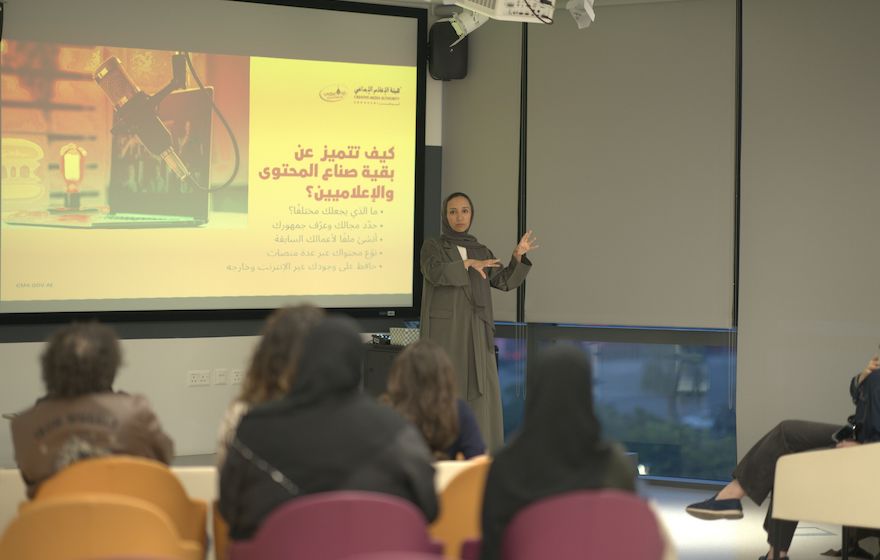As the demand for Arabic content is on the rise, Communicate looks at understanding how this content is created and catered to the diverse community of Arabic speakers today. Karim Daoud, CEO of Webedia Arabia, one of the largest digital Arab networks which curate content under the various pillars of; fashion and beauty, pop culture, food, parenting, and gaming/e-sports, shares with us his process.
What do you define as good content?
Good content is one that meets the objective. As digital media platform owners, we have objectives of reach, engagement and level of interaction with [our content]. We love our content to be shared and make rounds across different [platforms.] I don’t think there’s any magic recipe for good content. What we value more is – how to make our process of content creation always better, not miss [out] on trends and stay on top of our league.
It’s also about solving problems. For eg – One of our verticals, 3a2ilati.com, which focuses on content related to parenting, has an audience of mainly young moms, who go through all the phases and struggles of putting up with the new-born, society and the involvement of extended families. So you create a space- where you help them [by creating content that] solves problems- which could be something health-related, or how to manage the different phases of the toddlers’ growth, etc.
Do you create content specific to different countries in the Arab world?
When it comes to Arab speakers, after KSA, it would be the other GCC countries. There are not many Arabic speakers in the UAE. This is based on the statistics we’ve seen in our digital publications. And on top of that, our type of content is very Khaleeji, so the focus is on GCC, which commercially is also the primary target for our digital publications.
What are the viewers’ expectations around content?
On Uturn, our pop culture vertical, we retransmit people’s lives. When our diverse team ideates stories based on their own experiences, these stories often reflect the audience’s own stories. By having actually lived this content, we get engagement and likeability that fictional content cannot generate.
Also, by creating content that solves problems, you get quick responses. For example, we created a video on 3a2ilati.com that addressed a traditional Middle Eastern belief – disproved by science – that anise can relieve babies with an uneasy stomach. This video triggered a debate: one half was extremely upset that we destroyed a 600 years-old myth passed on for generations; and the other half was glad to learn about this and asked for alternatives. What’s even more fascinating is that our data showed how, while you’d [presume] the older generation would be the most upset, both sides had equal numbers of people across different age groups.
What are the new formats that you believe are the most innovative today?
If we look at the shift of consumption in the last four years, everything has moved into videos that can be easily consumed on social media. This is the trend in almost all content categories; whether it’s news, entertainment, food, etc. But at the same time, we don’t lose sight of our audience who are interested in long-form content, so the traditional platforms such as Youtube are a major focus as well. The content in these platforms can live longer and can be searched and pulled by [topic] of interest.
How is Arabic content evolving today?
Many more Arabic content publishers grew in the past few years, taking the competition to the next level. With Arabic content becoming increasingly reliable, it creates an [authentic] online content destination for the Arabs. Looking today, at our UTURN Snapchat channel which has exceeded two million followers lately, we see how it targets younger audiences by creating hyper-local native videos that are relatable to the Saudi millennials. The thirst for entertaining video content is currently paving [the way for] a more niche community, with specific interests that we need to keep up with.
How to improve content longevity?
Sometimes it’s not even an objective [ to keep it that long.] The nature of some of the platforms is such that, [content] is only to be made relevant for two-three days or a week at max. It’s very time-sensitive while for others, the content never dies. For eg – When it comes to the topic of beauty, which we cover on yasmina.com- our fashion and beauty vertical, such as learning how to have perfect eyelashes in June, tends to be relevant even in December. So with cases like these, the content just has to be on the right platform. Sometimes they even have the [potential] to be revived because of the influencer who has embodied the content.
Based on the data you possess, what are some of the key trends you’re seeing with regards to content preferences in the Arab region?
We use data for optimizing our content and tracking our audience’s behavior. Entertainment is the core of our DNA and it’s becoming a focal pillar for any educational content. We conducted a food intelligence report in 2019 for Atyab Tabkha – our food vertical. The data showed us that in food entertainment, the audience has a keen interest in the experience with food rather than the preparation of the food; especially with the rise of ASMR (Autonomous Sensory Meridian Response) videos.
Initially, social media platforms such as- Instagram, Snapchat, and Facebook were ephemeral by nature, but with user preference leaning towards longer videos, these platforms have adjusted their technology, to allow longer video formats – like IGTV, Snapchat shows, and Facebook Live to cater to the increased demand for longer-form content.
Regardless, user behavior differs across different platforms. On social media, the audience needs to be engaged by telling them a story. While on search, users usually seek informative, trustworthy and simplified content.
Where do you see Arabic content heading in five years’ time?
We cannot really predict content in five years’ time but one thing is for sure – great ideas will always be at the heart of the story. Innovation in content will be driven mainly by technology and the rise of new platforms. The consequence of this will allow us to adapt the content to the right platform, and to the ever-changing behavior of our audience. This means that we should also focus on the discovery mode of content that will be evolving.
We’ll have to use immersive ways by maximizing both online/offline work around a specific story- to meet user expectations across all platforms. More and more long-tail content will provide something for everyone in every country, on every theme with a local feel or length – it has already started but will surely continue.
Our audience is everywhere from fast-moving audiences to even ‘faster-moving audiences’ with little loyalty. We are looking very closely at the on-demand streaming battles by the new entrants in the content field. This field involves media and production houses, OTT companies, influencers and so much more – another thing for sure is that we are carefully watching the battle and the fight for subscribers.






